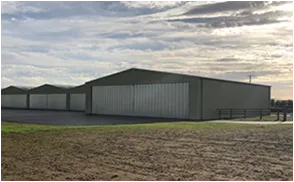- Afrikaans
- Albanian
- Amharic
- Arabic
- Armenian
- Azerbaijani
- Basque
- Belarusian
- Bengali
- Bosnian
- Bulgarian
- Catalan
- Cebuano
- Corsican
- Croatian
- Czech
- Danish
- Dutch
- English
- Esperanto
- Estonian
- Finnish
- French
- Frisian
- Galician
- Georgian
- German
- Greek
- Gujarati
- Haitian Creole
- hausa
- hawaiian
- Hebrew
- Hindi
- Miao
- Hungarian
- Icelandic
- igbo
- Indonesian
- irish
- Italian
- Japanese
- Javanese
- Kannada
- kazakh
- Khmer
- Rwandese
- Korean
- Kurdish
- Kyrgyz
- Lao
- Latin
- Latvian
- Lithuanian
- Luxembourgish
- Macedonian
- Malgashi
- Malay
- Malayalam
- Maltese
- Maori
- Marathi
- Mongolian
- Myanmar
- Nepali
- Norwegian
- Norwegian
- Occitan
- Pashto
- Persian
- Polish
- Portuguese
- Punjabi
- Romanian
- Russian
- Samoan
- Scottish Gaelic
- Serbian
- Sesotho
- Shona
- Sindhi
- Sinhala
- Slovak
- Slovenian
- Somali
- Spanish
- Sundanese
- Swahili
- Swedish
- Tagalog
- Tajik
- Tamil
- Tatar
- Telugu
- Thai
- Turkish
- Turkmen
- Ukrainian
- Urdu
- Uighur
- Uzbek
- Vietnamese
- Welsh
- Bantu
- Yiddish
- Yoruba
- Zulu
Dec . 09, 2024 14:57 Back to list
The Significance of Prefab Structural Steel in Modern Construction
In the rapidly evolving landscape of modern construction, prefab structural steel has emerged as a revolutionary building technology that is transforming the way we design and erect structures. Prefabrication refers to the assembly of components in a factory setting before transporting them to a construction site for final assembly. This method, particularly when it comes to structural steel, offers numerous advantages that contribute to efficiency, cost-effectiveness, and sustainability.
Understanding Prefab Structural Steel
Prefab structural steel involves the fabrication of steel components such as beams, columns, and trusses in a controlled environment. These components are then transported to the construction site where they are assembled into the final structure. This process contrasts sharply with traditional construction methods, where steel elements may be fabricated on-site, leading to longer build times and higher labor costs.
Advantages of Prefab Structural Steel
1. Speed of Construction One of the most significant advantages of prefab structural steel is the reduction in construction time. Since the components are built off-site, they can be fabricated concurrently with the site preparation and foundation work. This parallel process allows for faster project completion, which is critical in meeting tight deadlines.
2. Cost Efficiency Prefab structural steel can lead to substantial cost savings. The controlled environment of a factory reduces waste and optimizes the use of materials, lowering the overall costs of labor and resources. Additionally, the reduced onsite construction time minimizes the costs associated with labor and equipment rental.
3. Quality Control The factory setting allows for rigorous quality control measures that are often difficult to achieve on a construction site. Each piece of structural steel is manufactured to exact specifications and undergoes thorough inspections before being shipped to the site. This factor ensures a higher level of precision and quality in the final structure.
prefab structural steel

4. Design Flexibility Prefabricated steel offers architects and engineers greater design flexibility. The ability to create custom components means that complex designs can be realized without the traditional constraints associated with on-site construction. This flexibility has spurred innovation in architectural design, enabling the creation of striking and unique buildings.
5. Sustainability As the construction industry increasingly focuses on sustainable practices, prefab structural steel stands out for its eco-friendliness. The efficient use of materials means less waste, and the steel itself can be recycled at the end of its service life. Furthermore, the reduction in on-site construction time leads to lower energy consumption and reduced carbon emissions during the building process.
6. Enhanced Safety The reduction of onsite construction work also translates to improved safety. With fewer workers exposed to potential hazards on-site, the risks associated with construction accidents decrease significantly. Off-site manufacturing helps ensure that the assembly process is conducted in a safe environment.
Applications of Prefab Structural Steel
The versatility of prefab structural steel makes it suitable for a wide array of projects, from residential buildings to large commercial complexes and industrial facilities. It is frequently used in the construction of warehouses, schools, bridges, and even high-rise buildings. Each project benefits from the speed, efficiency, and reliability that prefab structural steel provides.
Conclusion
In conclusion, prefab structural steel is rapidly becoming a cornerstone of contemporary construction practices. With its multitude of advantages, including speed, cost-efficiency, superior quality, design flexibility, sustainability, and enhanced safety, it stands to reshape the future of the industry. As construction demands evolve, embracing prefabrication technology could be pivotal in meeting the challenges of urbanization, environmental concerns, and the need for faster construction times. As we look ahead, the role of prefab structural steel is likely to grow even more significant, paving the way for innovative and sustainable building solutions.
-
How Do Prefabricated Steel Structures Transform Modern Construction?
NewsJul.14,2025
-
How Do Prefabricated Metal Buildings Redefine Modern Construction?
NewsJul.14,2025
-
How Do Prefab Insulated Metal Buildings and Steel Structures Revolutionize Modern Construction?
NewsJul.14,2025
-
How Do Pre - Engineered Steel Structures Redefine Modern Construction?
NewsJul.14,2025
-
Advancing Modular Construction with Prefabricated Metal Structures
NewsJul.14,2025
-
Advancing Industrial Infrastructure with Prefabricated Steel Solutions
NewsJul.14,2025
Products categories
Our Latest News
We have a professional design team and an excellent production and construction team.












